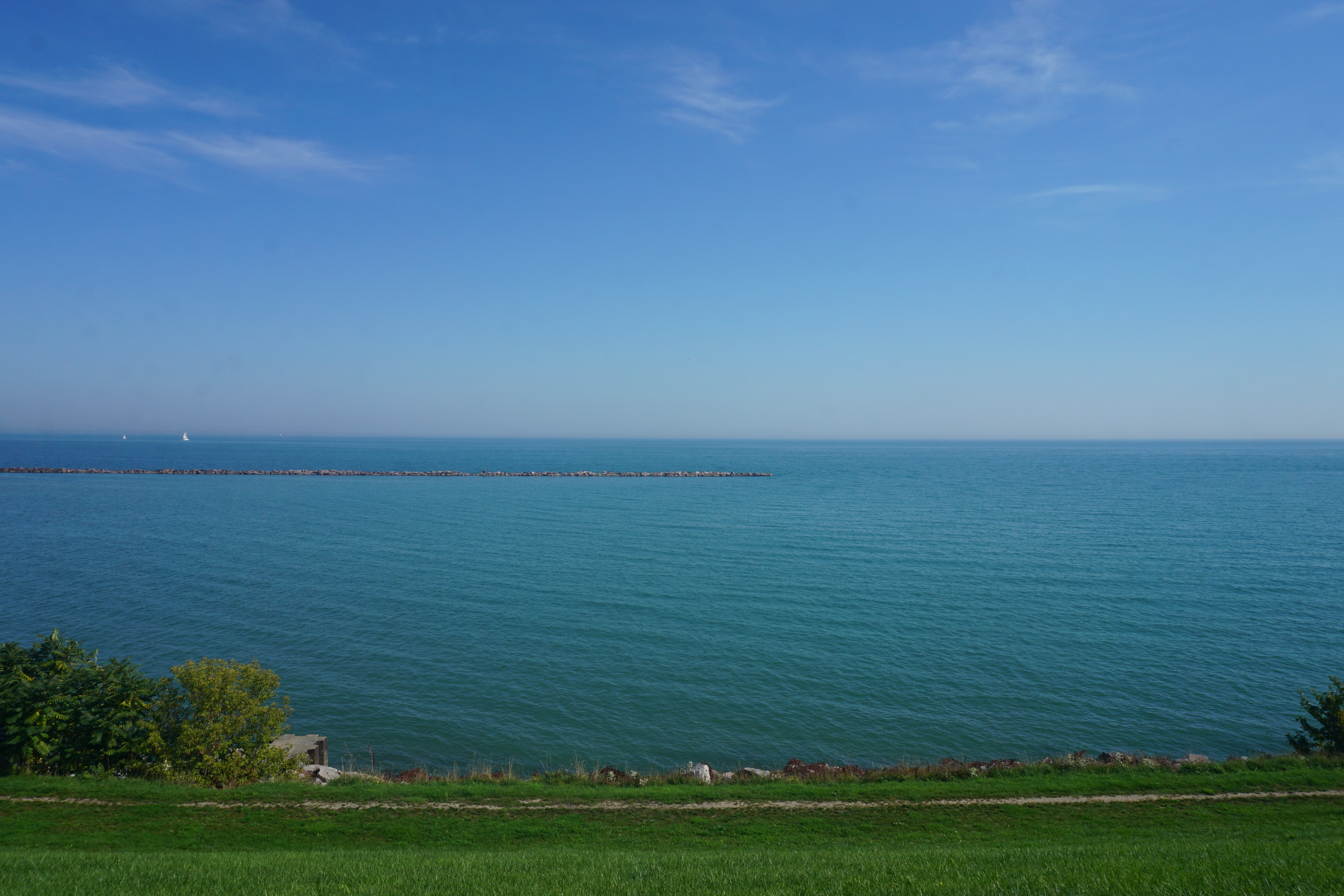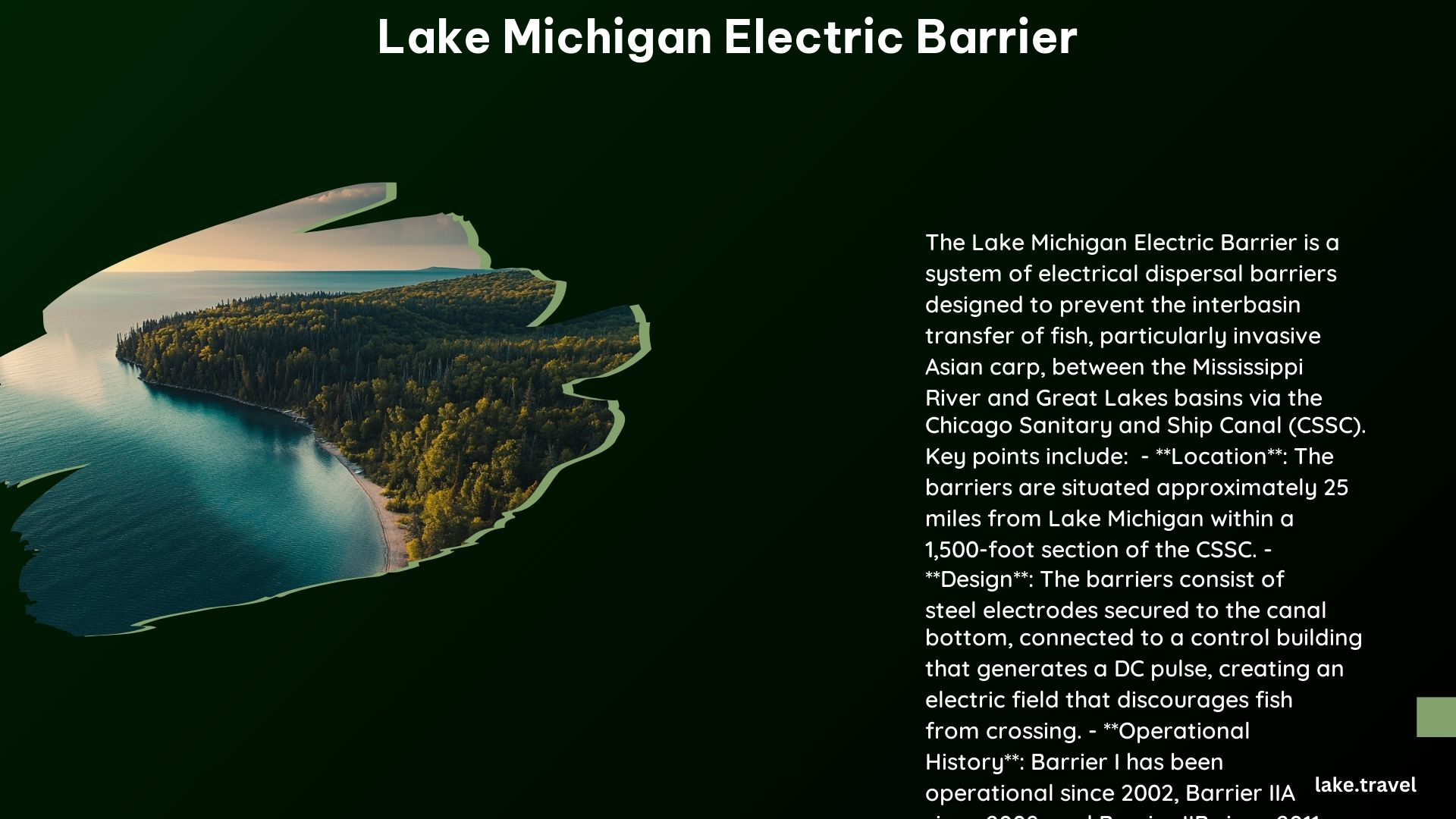The Lake Michigan Electric Barrier is a crucial defense system designed to prevent the invasive Asian carp from entering the Great Lakes. This barrier, located in the Chicago Sanitary and Ship Canal, has been operational since 2002, with additional barriers added in the following years to enhance its effectiveness.
Current Status and Effectiveness of the Lake Michigan Electric Barrier

The Lake Michigan Electric Barrier consists of three main components:
- Barrier I: Operational since 2002
- Barrier IIA: Added in 2009
- Barrier IIB: Added in 2011
These barriers work by generating a DC pulse that discourages fish from crossing the canal, effectively repelling larger fish like Asian carp. However, the barrier’s effectiveness has faced some challenges, as smaller fish (around 2 inches in size) have been able to swim through, and the impact of barges on the barrier’s performance is a concern.
Concerns and Challenges Surrounding the Lake Michigan Electric Barrier

Despite the barrier’s success in repelling larger fish, there are still some concerns and challenges that need to be addressed:
- Asian Carp Breach: While there have been no confirmed instances of Asian carp breaching the barrier, there have been instances of fish being caught near the barrier, raising concerns about the potential for carp to bypass the system.
- Invertebrate Species: Recent studies have shown that the electric barrier does not effectively block other invasive invertebrate species, such as mussels, crayfish, and snails, which can still pose a risk to the Great Lakes ecosystem.
- Maintenance and Redundancy: The barriers require periodic maintenance, which can lead to temporary shutdowns, and multiple barriers are needed to ensure continuous protection.
Upgrades and Future Plans for the Lake Michigan Electric Barrier
To address the concerns and challenges, there are several upgrades and future plans in the works:
- Brandon Road Lock and Dam Project: A new, more complex barrier is being designed and built at the Brandon Road Lock and Dam on the Des Plaines River. This barrier will incorporate multiple deterrents, including electric shocks, underwater sound, and air bubble curtains.
- Cost and Funding: The total cost of the Brandon Road Lock and Dam project is expected to approach $800 million, with Michigan contributing $8 million and Illinois contributing $2.5 million for the planning phase.
- Timeline: The design and construction of the new barrier are expected to take three to four years.
Conclusion
The Lake Michigan Electric Barrier has been a crucial component in the ongoing effort to protect the Great Lakes from the threat of invasive Asian carp. While the barrier has been successful in repelling larger fish, there are still concerns and challenges that need to be addressed. The upcoming Brandon Road Lock and Dam project aims to enhance the barrier’s effectiveness and provide a more comprehensive defense against a wide range of invasive species, ensuring the long-term protection of the Great Lakes ecosystem.
References
- Michigan, Illinois sign agreement to build Asian Carp barrier. (2021, January 7). Retrieved from https://www.michiganpublic.org/environment-science/2021-01-07/michigan-illinois-sign-agreement-to-build-asian-carp-barrier
- Better living through electricity — keeping Asian carp out of the Great Lakes. (2016, January 13). Retrieved from https://news.medill.northwestern.edu/chicago/better-living-through-electricity-keeping-asian-carp-out-of-the-great-lakes/
- The Electric Dispersal Barriers. (n.d.). Retrieved from https://invasivecarp.us/Documents/BarrierBrochure.pdf
- Electric barrier to keep silver, bighead carp from Great Lakes allows in other invaders, study says. (2023, January 9). Retrieved from https://www.mlive.com/public-interest/2023/01/electric-barrier-to-keep-silver-bighead-carp-from-great-lakes-allows-in-other-invaders-study-says.html
- Inside the Race to Build a $1.2 Billion Fish Barricade. (2023, June 12). Retrieved from https://undark.org/2023/06/12/inside-the-race-to-build-a-1-2-billion-fish-barricade/
